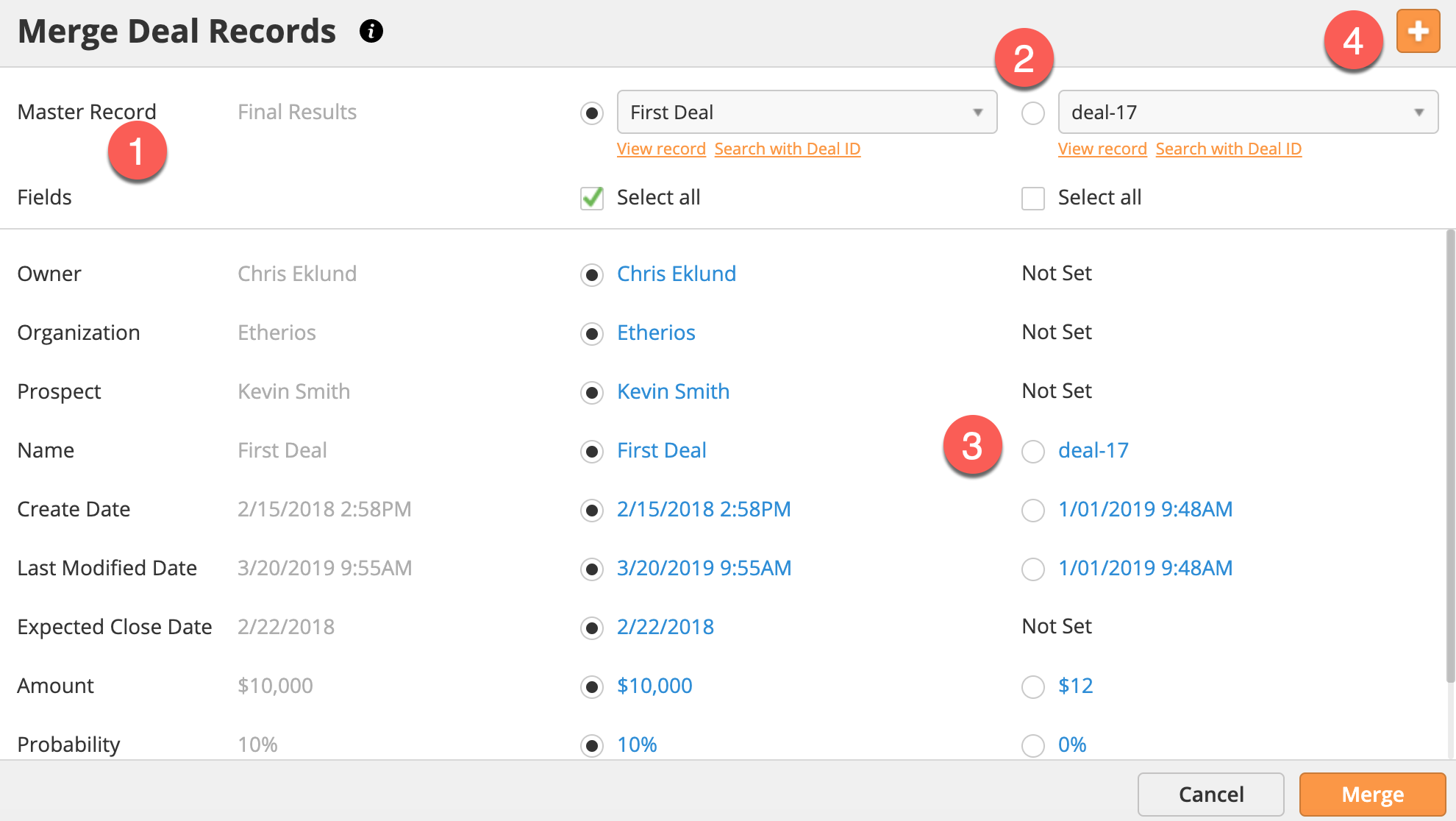Deals are the sales opportunities within a Pipeline. Users can create a deal as soon as they can enter a value for the sale. Users can associate deals with Prospects and Organizations, and keep up to date on tasks from the Manage Deals page.
You can manually add new Deal in three different ways. You can click the New button in the top-left corner of the Manage Deals page; you can click the New Deal icon in the Sales Shortcuts; you can click Add Deal on the Deals Info Card. To be able to add a deal, you must have a sale amount.
Use the New Deal Form to add a Deal to your Pipeline.
You can see an overview of all Deals in a Pipeline from the Manage Deals page. To reach the page, navigate to Main Menu > Sales > Deals. The page will show the Default Pipeline, but you can switch between Pipelines using the drop-down menu in the top-right.
By default, the page will display Deals in Card format. You can change the view with the buttons in the top-left.
The available views are
While in Card View and Mini Card View, you will have an additional drop-down menu in the top-right. This menu contains sorting and display options for the Cards.
Use the Deal Filter option to search for Deals using any criteria from Standard and/or Custom Deal fields:
![]()
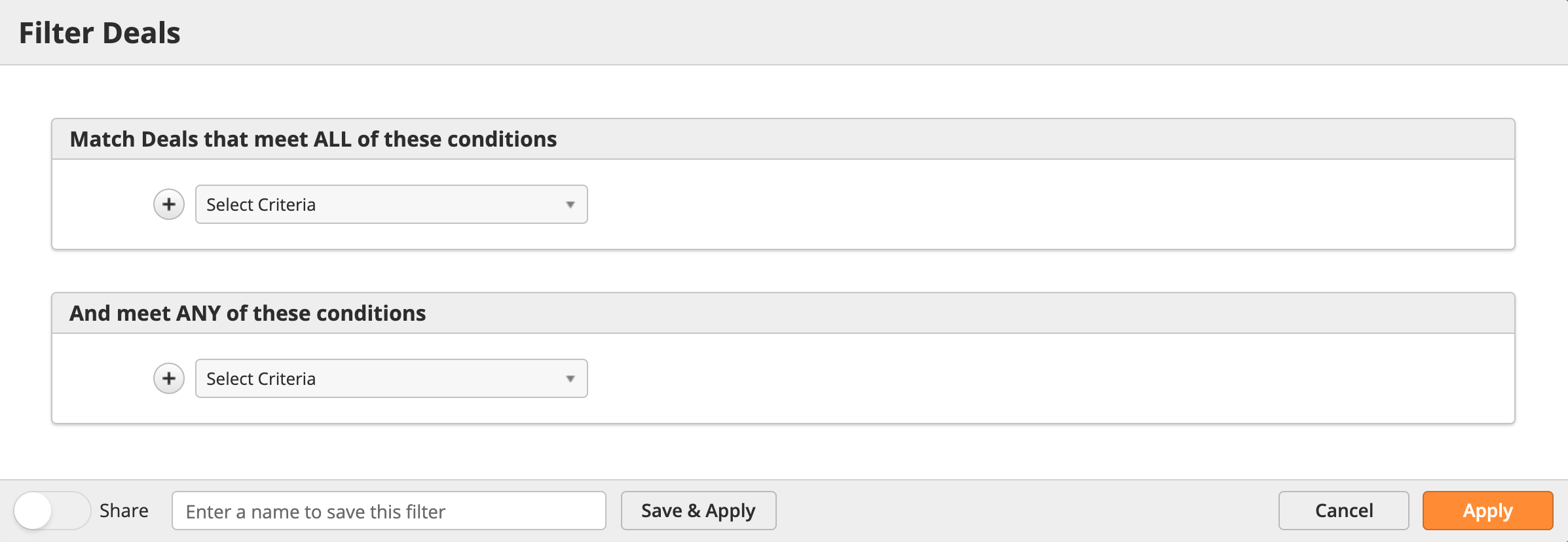
You can use Bulk Actions to edit multiple Deals at the same time. First, set your view to Table View (see above). Then, use the checkbox in the top-left corner to select the appropriate Deals and action.
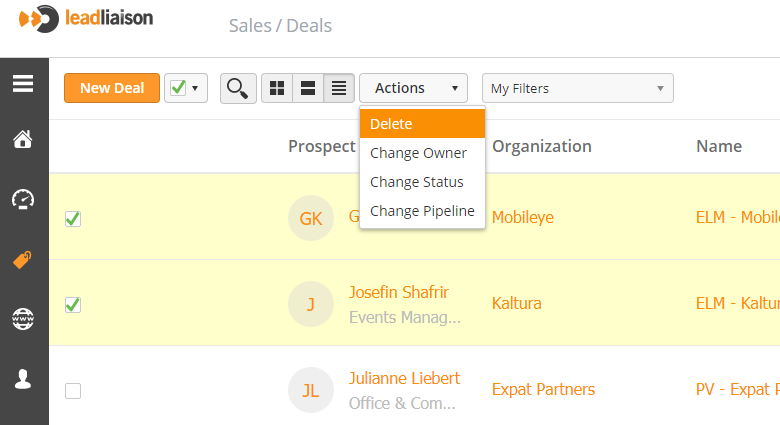
Deal Cards are a great way to make sure your Deals are getting the attention they need. Cards help you manage Deals through the task box and color coding.
Cards will show you the following Task statuses:
Note: a Deal in Stage Rot will always have a yellow color stripe regardless of the task box. |
When sorted by task, Cards will order Stage Rot > Overdue > Due Today > Future Due Date > No Task.
Consolidated Pipelines combine multiple Pipelines into a single Pipeline. Linking a standard pipeline to a consolidated pipeline shows all deals from standard pipelines in a single consolidated pipeline. When a consolidated pipeline is created both the deal management page and sales dashboard will have an option to view consolidated pipelines and deals.
Both standard and consolidated pipelines must have the same number of stages. Once a standard pipeline is linked to a consolidated pipeline you cannot add stages, remove stages, or change the order of the stages. |
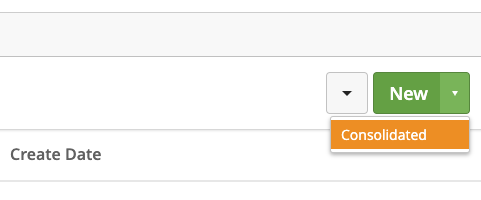
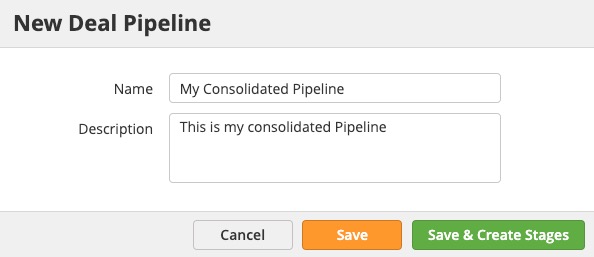

| Choose an existing Consolidated Pipeline with similar number of stages | Create a brand new Consolidated Pipeline with a new name |
|---|---|
|
|
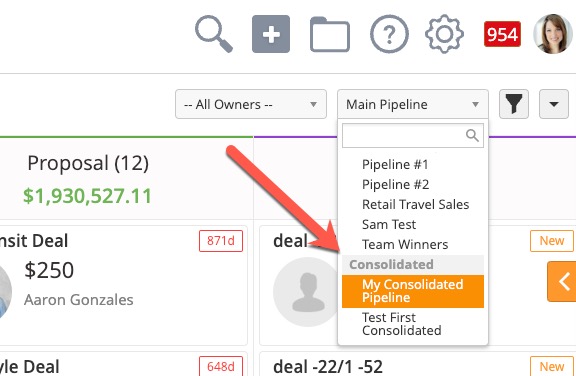
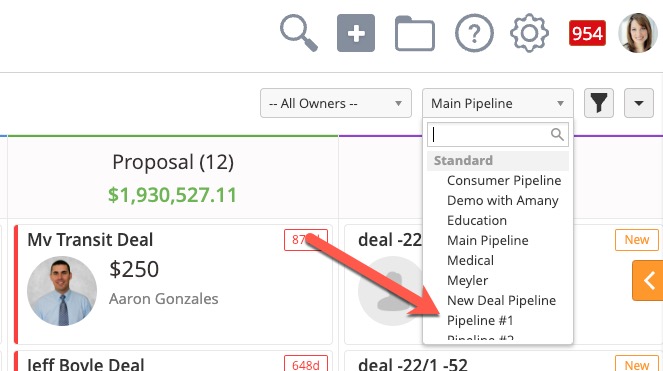
To view your Consolidated Pipeline Sales Dashboard do the following navigate to Dashboard on the left menu then:
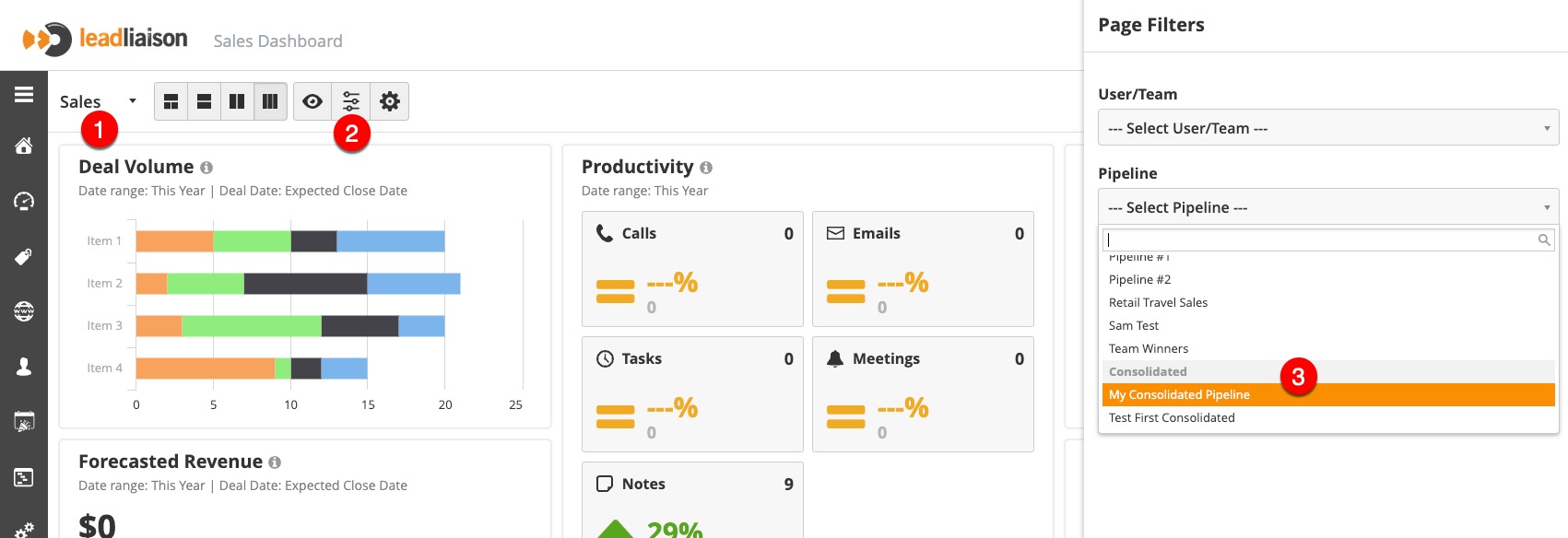
Just like Prospects and Organizations, each Deal gets its own profile. To reach the Deal Profile, either click on the Deal from the Pipeline, or click on the Deals Info Card in the other profile views.
The system logs every Deal's history. Users can view every change to the Deal in the Sales Pipeline from the Deal Profile. To view a Deal's history, click on the info icon to the right of the Pipeline Stages.
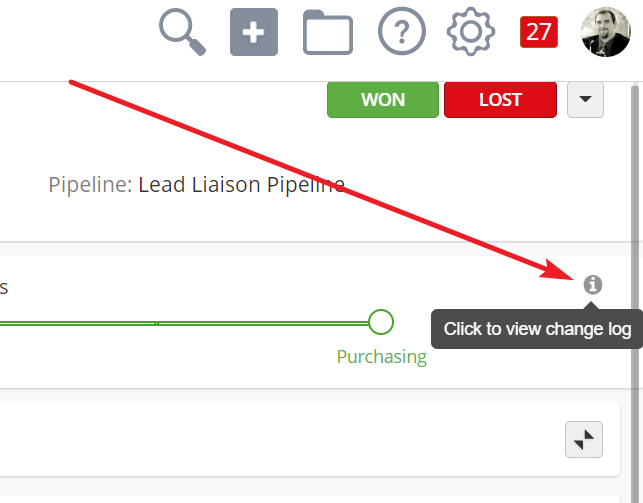
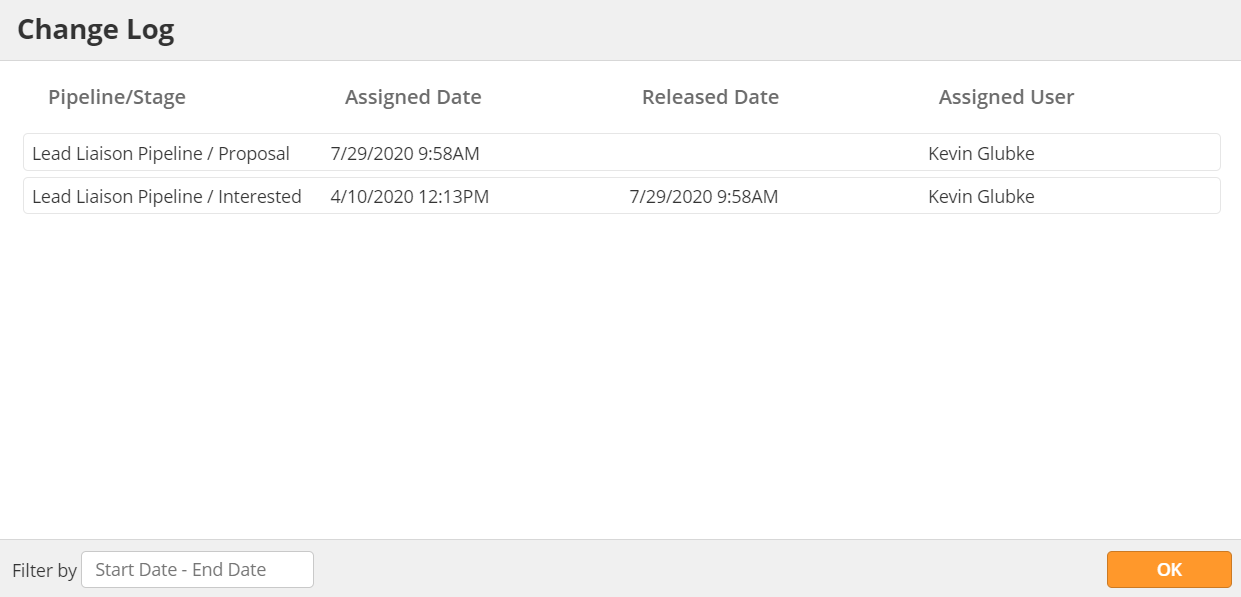
Pipeline Stages indicate where a Deal is in the sales process. By default, OneFocus™ will use Awareness, Qualification, Interest, Proposal, and Closure as Stages. However, your organization may customize the Stages to fit your business model. For example, a non-profit charity may delete the Proposal Stage, or a sales organization may prefer to use "First Meetings" instead of "Qualification."
Make sure you keep your Deals in the appropriate stage. Automations can use Stages as a field for sending out specific nurture emails. You don't want a prospect you're ready to close on getting emails for a special offer you haven't discussed.
Every Stage has a Stage Rot timer. If a Deal stays in a Stage for longer than your organization's set time, OneFocus™ will flag it with Stage Rot. On the Manage Deals page, the CRM will give it a yellow color stripe. When Deal Cards are sorted by task, the CRM will list any Card flagged with Stage Rot first.
If you notice a Deal with Stage Rot, make sure you address it immediately. These Deals have stalled and are taking longer than your organization's normal sales cycle. Make sure you keep detailed notes for why a Deal is taking longer than normal.
You can view deals based on their probability to closing. Probability will affect the total value of Deals in the Pipeline. For example, a $1000 Deal with 10% probability will report $100 in value. This value is the expected revenue.
To view Deals by expected revenue, use the drop-down menu in the top-right corner of the Deals page.

If you are using custom probability on your Deals, you can also sort by Deal probability. To add a custom probability to a Deal, navigate to the Deal profile and double-click the Probability rating beneath the Deal Name.
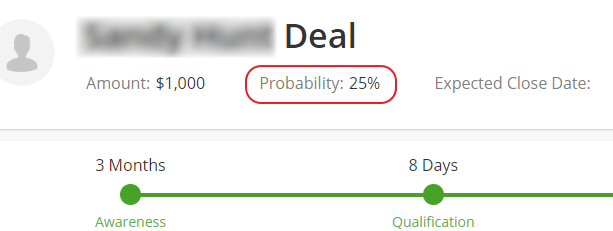
Learn more about setting Probability by pipeline stage here.
Whether a Deal is won or lost, make sure you close it out. By using either the green Won button or red Lost button on the Deal Profile, you can pull the Deal out of the Pipeline. Alternatively, you can drag and drop the Deal Card from the Deals Management Page to buckets on the bottom of the page.
If you want to see your closed Deals,
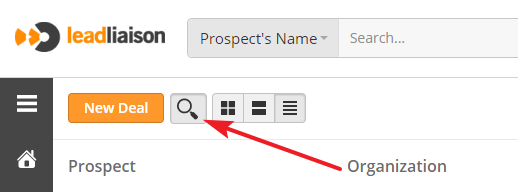
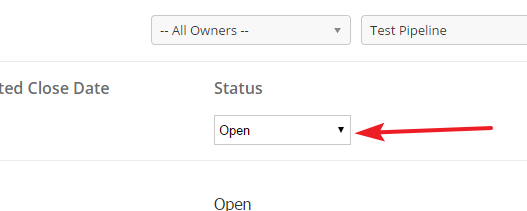
Deals can be closed from the Deal profile page by clicking the WON button.
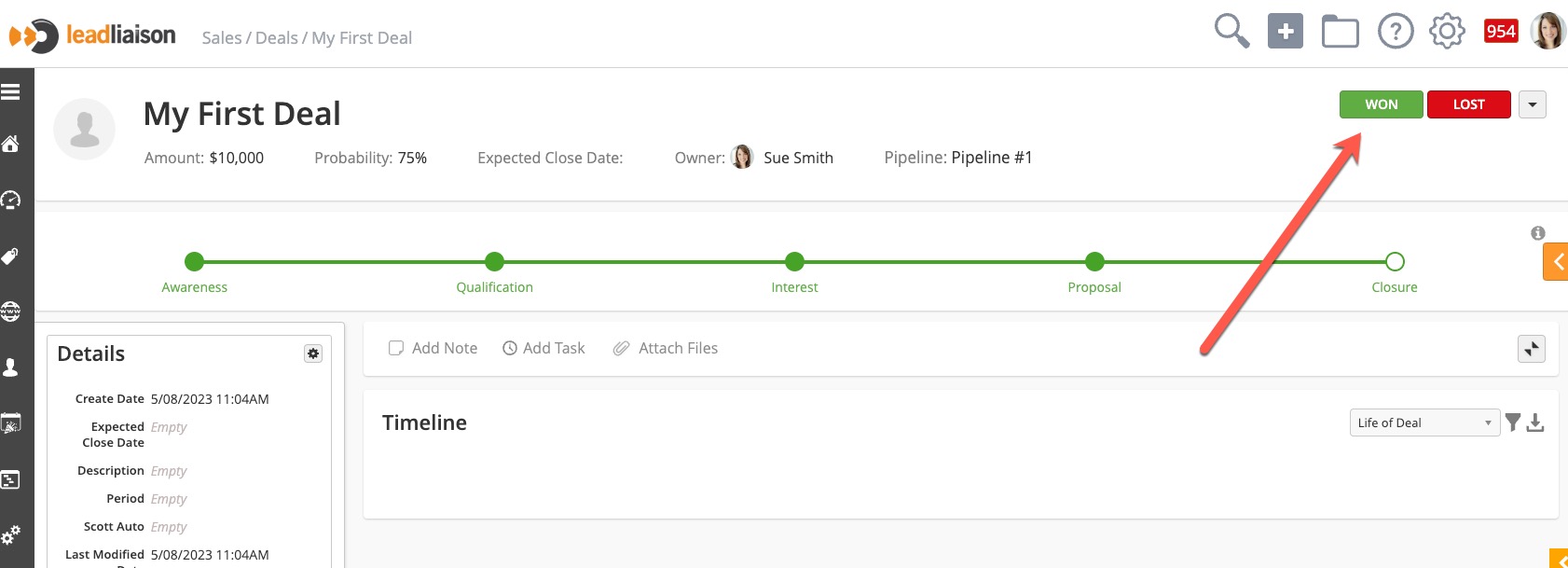
The Close Date will be updated to todays date depending on settings. The following settings provide control over the Closed Date:

To update the settings:
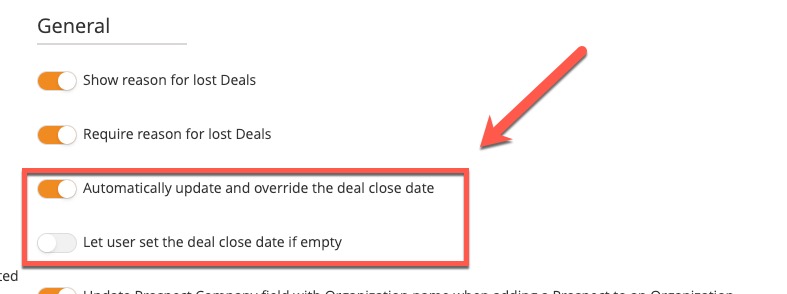
You can also add a Deal to the Trash. When a lead is trashed, it is completely removed from the Pipeline, and you will not see it on any of the Profiles or Manage Deals page. To send a Deal to the Trash, either use the drop-down menu in the Deals Profile or drag the Deal Card to the Trash bucket on the bottom of the screen.
In general, it's a best practice to mark the Deal either way rather than trashing it. Even if a Deal falls through due to silence, it's better to close it as Lost so sales leadership can review later.
From the Task Panel, you can add Notes or new Activities associated with the Deal. You can also attach files; for example, you could upload a credit application for equipment leases.
Any Notes or Activities associated with the Deal will show up in the Timeline below. This includes Automated activities.
The Info Cards to the left of the screen give you a quick visual summary of the Prospect's information and connections. You can rearrange the cards by clicking and dragging them to the order you prefer. Anything you move is exclusive to your login, so feel free to customize as you like.
To export Deals do the following:

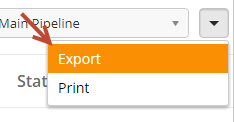
You can merge up to three Deals into a single Deal record. When merging a record all timelines are merged into a single timeline.
Follow these steps to merge one or more records together:
Search for the record you’d like to merge.
Click the down arrow and select Merge as shown in the screenshot below.
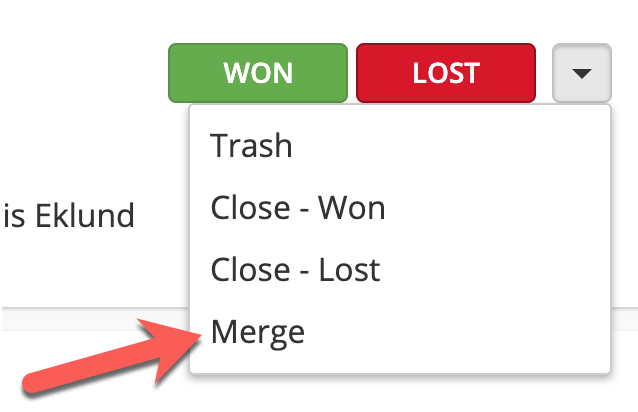
When the merge window appears there are four main areas:
The first column shows the Master Record. The Master Record will become the new record. All selected values from the duplicate records will be merged with the Master Record. Be default, the most recent value for each field is selected. All related timeline activities, notes, tasks, etc. will be associated with the Master Record.
Select additional records to merge with the original record selected for merge. You can select up to three total records to merge.
Pick each individual value that you’d like to use instead of the default selection. Changes appear in real-time under the Master Record column.
Add additional records to merge using the plus symbol.
